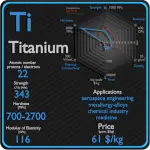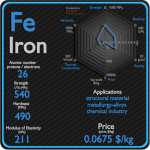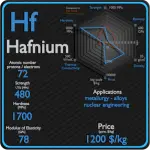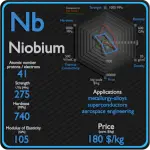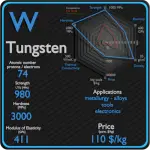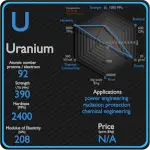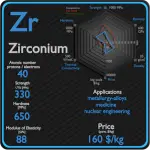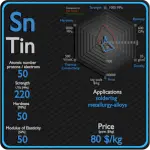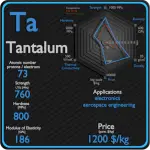This article contains comparison of key thermal and atomic properties of zirconium and niobium, two comparable chemical elements from the periodic table. It also contains basic descriptions and applications of both elements. Zirconium vs Niobium.
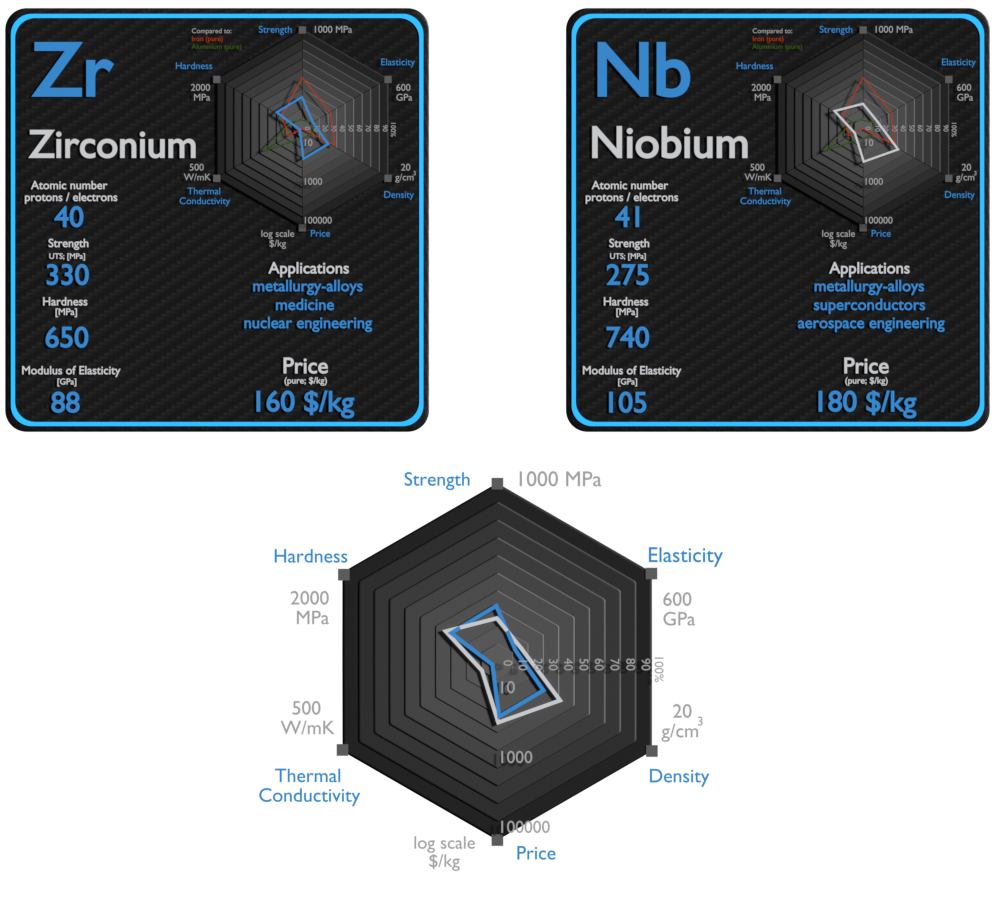
Zirconium and Niobium – About Elements
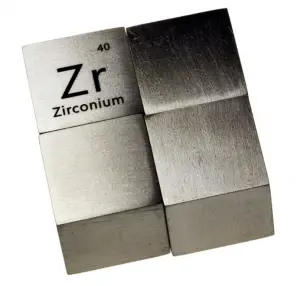
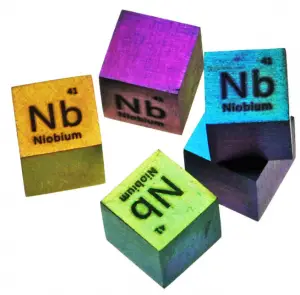
Source: www.luciteria.com
Zirconium and Niobium – Applications
Zirconium
Most zircon is used directly in high-temperature applications. This material is refractory, hard, and resistant to chemical attack. Because of these properties, zircon finds many applications, few of which are highly publicized. Its main use is as an opacifier, conferring a white, opaque appearance to ceramic materials. Zirconium and its alloys are widely used as a cladding for nuclear reactor fuels. Zirconium alloyed with niobium or tin has excellent corrosion properties. The high corrosion resistance of zirconium alloys results from the natural formation of a dense stable oxide on the surface of the metal. This film is self healing, it continues to grow slowly at temperatures up to approximately 550 °C (1020 °F), and it remains tightly adherent. The desired property of these alloys is also a low neutron-capture cross-section. The disadvantages of zirconium are low strength properties and low heat resistance, which can be eliminated, for example, by alloying with niobium.
Niobium
Niobium consumption is dominated by its use as additive to high strength low alloy steel and stainless steel for oil and gas pipelines, car and truck bodies, architectural requirements, tool steels, ships hulls, railroad tracks. However, there are a number of other applications for niobium metal and its compounds. Although niobium has many applications the majority is used in the production of high-grade structural steel. The second largest application for niobium is in nickel-based superalloys. Niobium-tin alloys are used as superconducting magnets.
Zirconium and Niobium – Comparison in Table
| Element | Zirconium | Niobium |
| Density | 6.511 g/cm3 | 8.57 g/cm3 |
| Ultimate Tensile Strength | 330 MPa | 275 MPa |
| Yield Strength | 230 MPa | 70 MPa |
| Young’s Modulus of Elasticity | 88 GPa | 105 GPa |
| Mohs Scale | 5 | 6 |
| Brinell Hardness | 650 MPa | 740 MPa |
| Vickers Hardness | 900 MPa | 1300 MPa |
| Melting Point | 1855 °C | 2477 °C |
| Boiling Point | 4377 °C | 4744 °C |
| Thermal Conductivity | 22.7 W/mK | 53.7 W/mK |
| Thermal Expansion Coefficient | 5.7 µm/mK | 7.3 µm/mK |
| Specific Heat | 0.27 J/g K | 0.26 J/g K |
| Heat of Fusion | 16.9 kJ/mol | 26.4 kJ/mol |
| Heat of Vaporization | 591 kJ/mol | 682 kJ/mol |
